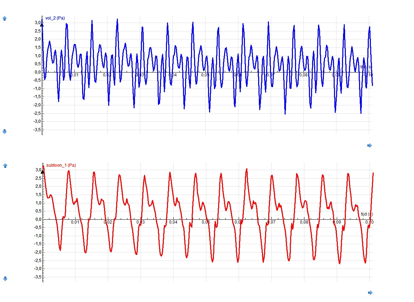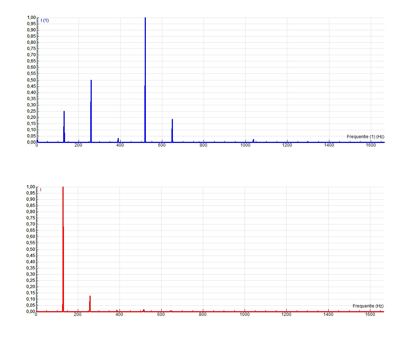| Learning Aims: |
|
| Materials: |
|
| Suggestions for use: |
|
Students should be familiar with sound sensor measurements (for instance Coach 6) and analysing possibilities. When students have the required knowledge on the subject, it is possible to do this as an open inquiry. It is possible to divide the class in different groups and let all groups do another instrument. One can think of all the available musical instruments but also bottles or plastic pipes or even the human voice (other possibilities are toys) See for an example of analysing the timbre of a saxophone: http://youtu.be/0nff7Lbe9xM. In this movie, you see and hear the same tone played twice in a different way. In the diagrams below we see these two tones: the frequency is the same but the shape differs.
Taking a Fourier analysis, shows that the two signals have some components in common but that the first one (with the blue graphs) has a much richer timbre.
|
| Possible questions: |
|

